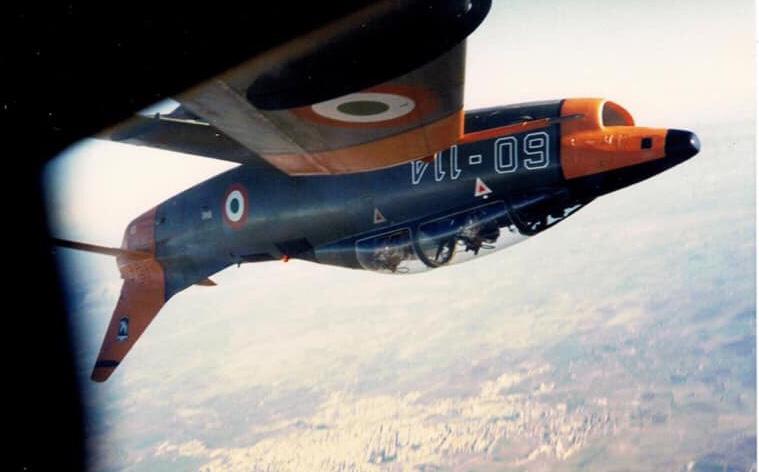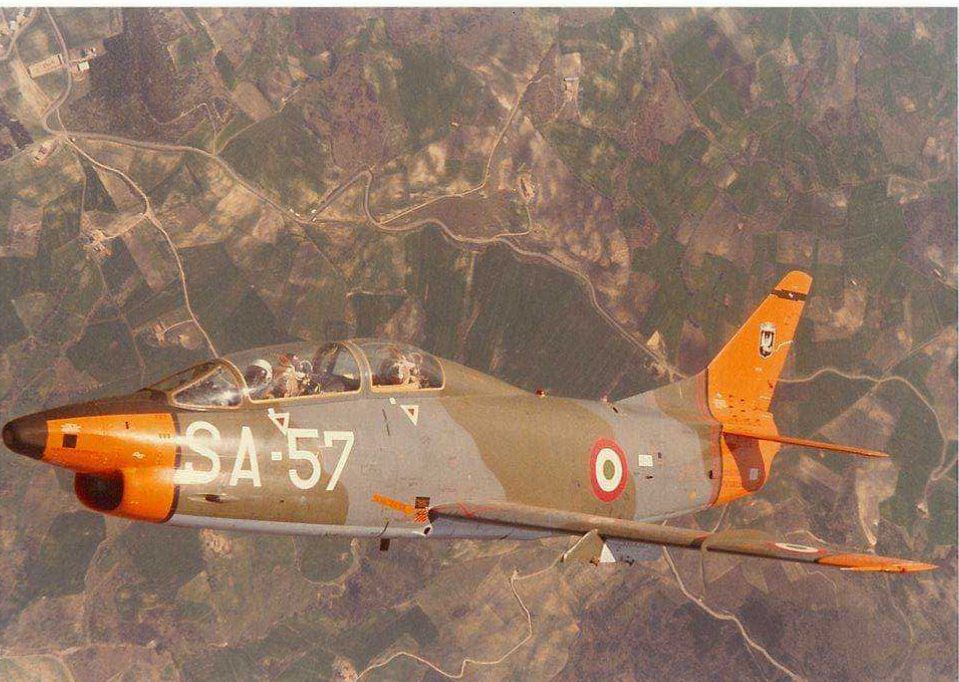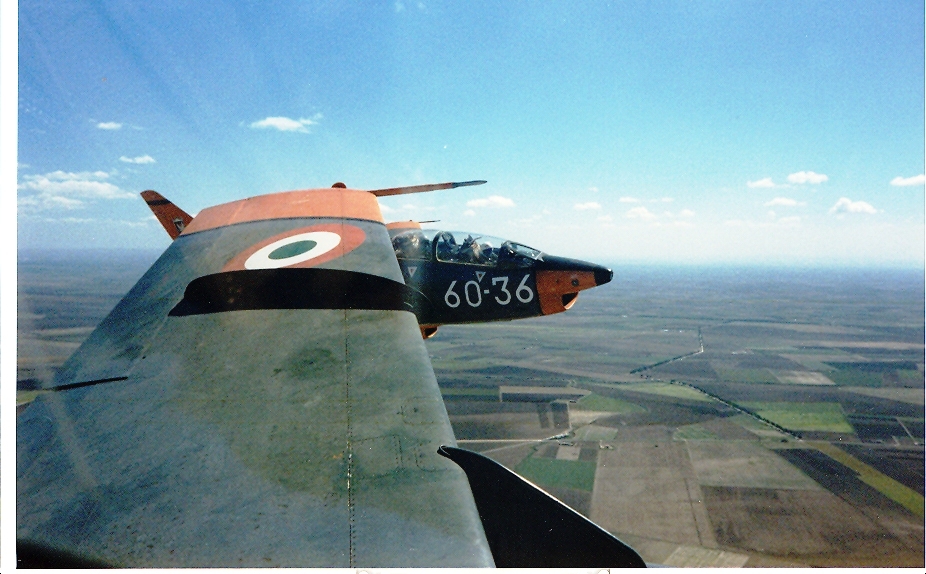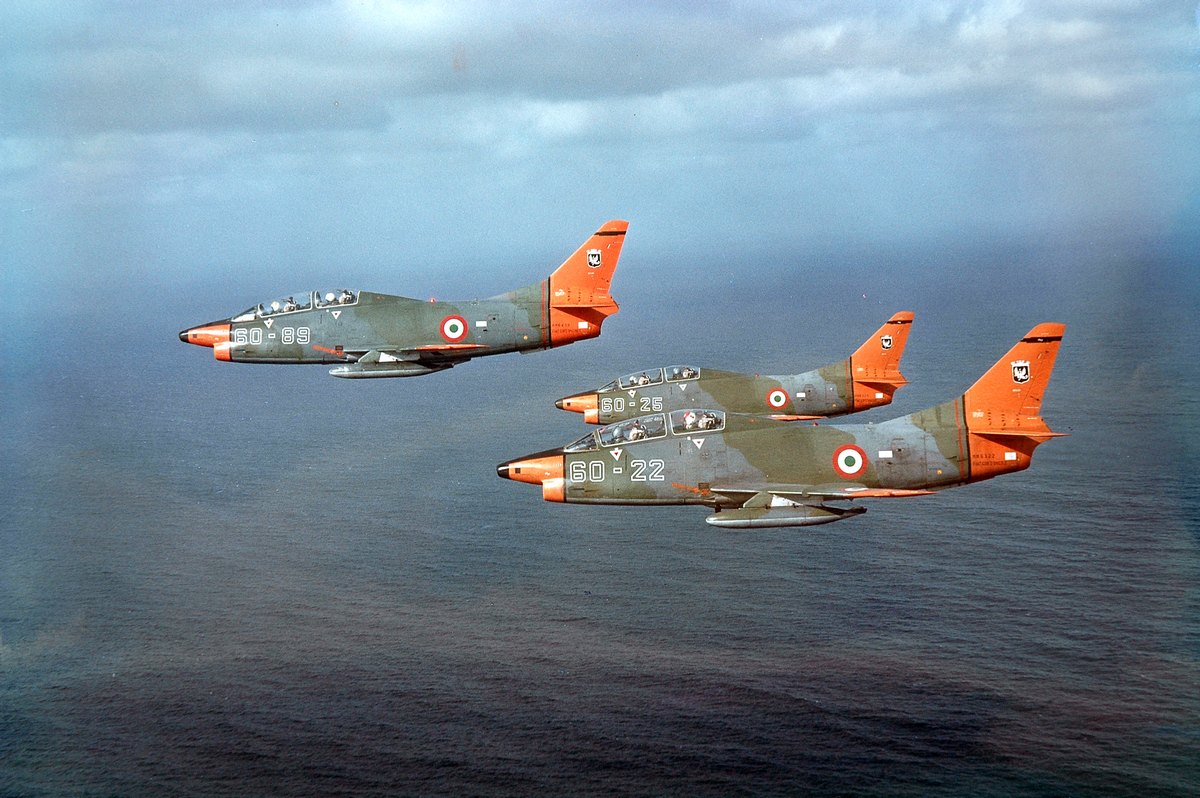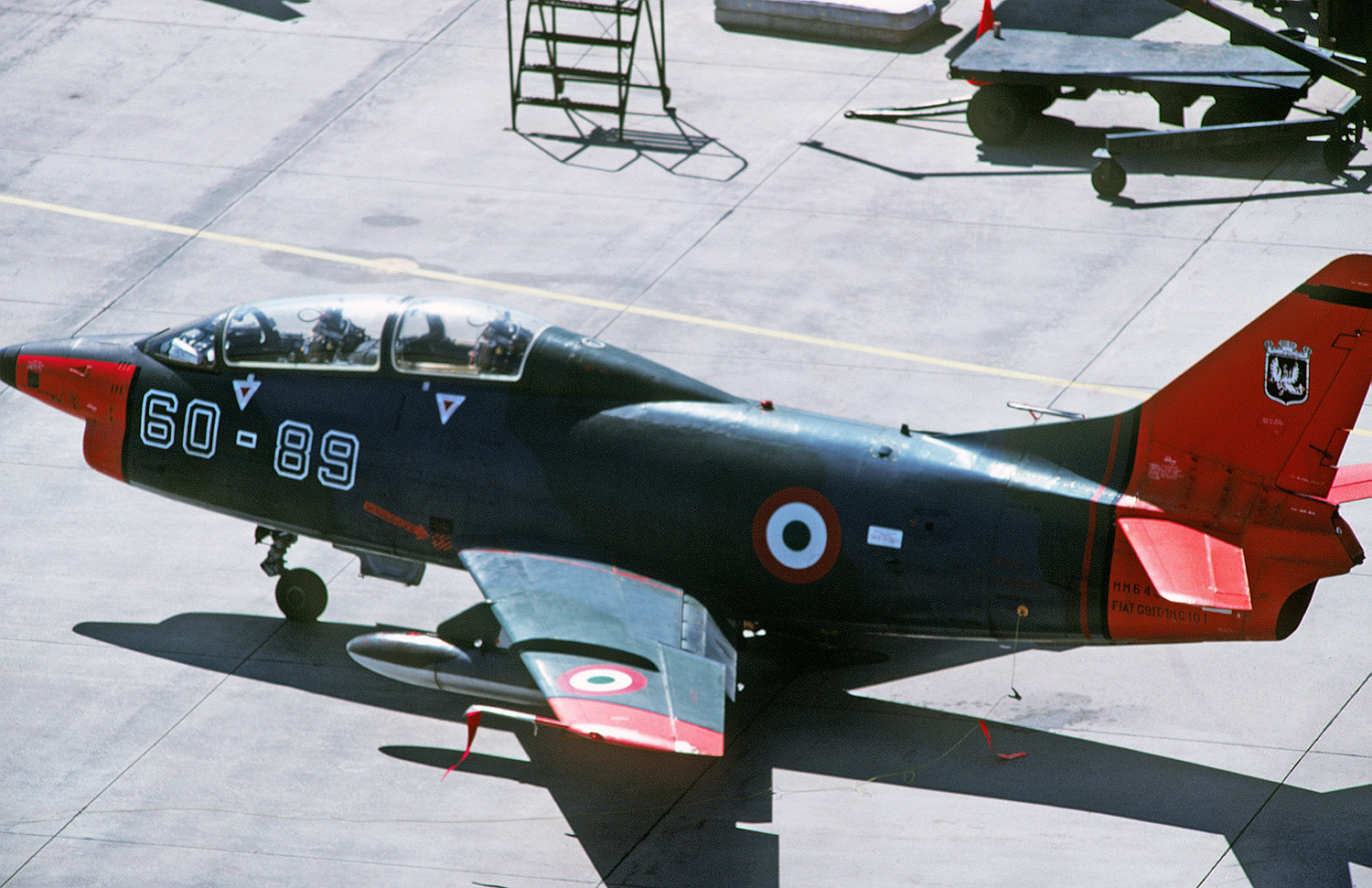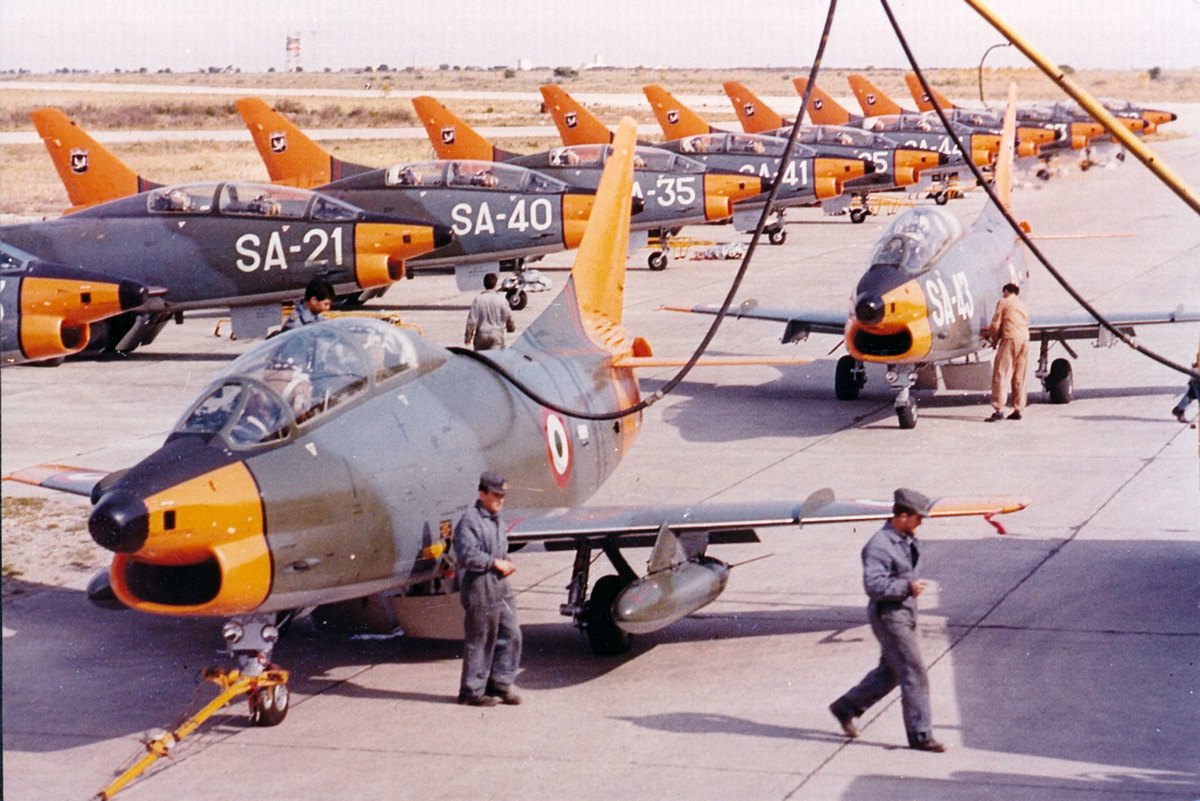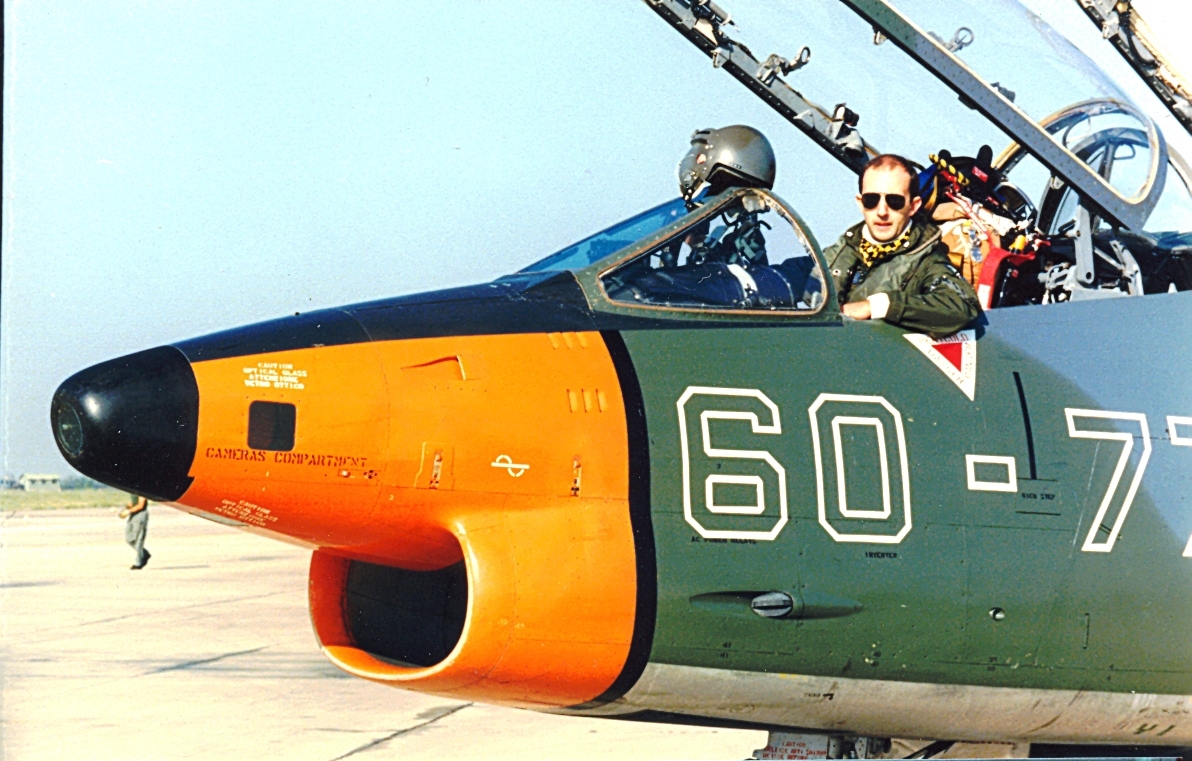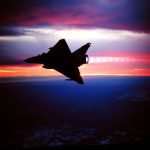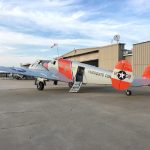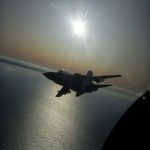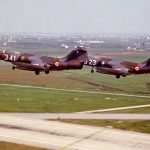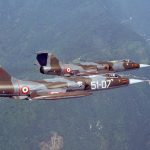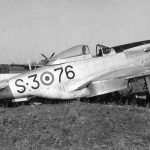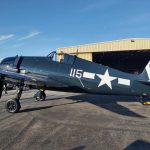Pilot Report is a collection of flying experiences sent by our readers and readopted as article for this website. If you are interested in sharing your memories and stories with us please contact us HERE.
By Roberto Sardo
Back in the 80s and 90s the ItAF flight schools were based on the SIAI 260, as the Initial basic propeller trainer, used for the initial selection of the students and some currency activity (average 40 Hours) during the arch of 3.5 years Academy time. Following, after the Academy, started the Initial jet training with the Aer-Macchi 326 (and Macchi 339 after the year 1981) at the Flight School of Lecce (at the southern tip of Puglia, the heel of Italian peninsula ). The program (some 130 flight hours) included Visual Flight and Aerobatics, 2 and 4 ship Formation, Instrumental flight, Navigation and VFR/IFR Night Flying. With the advent of Macchi 339 CD (mid ‘90s), this program was implemented with low level navigation, Basic Fighting Maneuvers and Inflight refueling activity, in order to provide the students the full Air Force Pilot wings. Before the nineties, the students that were successful were sent to Amendola AFB (South Eastern Italy, near the spur of the peninsula), where the training followed on the Fiat G-91T. The switch between the easy handling and forgiving Macchi and the swept wing G91 (Gina) was a real trauma. The plane was incredibly sensitive and responsive on the controls, especially on the roll. You could detect the newbies from the waggling take off, aka “Gina’s rock”. After the Initial transition, the program was centered on day and night Visual and Instrumental flight and cross country navigation. Then, aerobatics, 2 and 4 ship formation, including aerobatic formation training. The students that passed the first phase (average 90 hours) were awarded with the Air Force Pilot Wings (Pilota Militare) and divided between Support lines (transport or rotary wing) or Fighters. The latter continued with the Lead In training (pre-operational, about 30 hours) and were instructed in Air to Air combat and Air to Ground attack, Basic Fighting Maneuvers, Low Level Navigation (1,000ft), Tactical formation. At the end the pilots were sent to G91R/Y units, Tornado units (previous the TTTE endorsement at RAF Cottesmore, UK) or to the F104 Operational Conversion Unit located in Grosseto (southern Tuscany). This was the dream of most of the pilots, since the plane was the top performing aircraft, for speed and climb performances.
The tale is centered on one of the many night flying sorties with a 2 ship formation from Amendola AFB. When possible, the instructors, all with a previous experience from operational fighter units, were introducing (when applicable, according with the students performance) a collegiate atmosphere, masked as a grumpy behavior.
Historical note: At Foggia airfield, main city nearby Amendola, in 1918 were flight-trained as many as 700 US Army Air Corp pilots, led by Fiorello La Guardia. These pilots, named “I Foggiani”, flew the Caproni bombers side by side with the Italian pilots during the last months of WW1.
Amendola AB was enlarged in Dec 1943 by the engineers of the 15th AF in order to host two B17s Heavy Bomber Groups (97th and 2nd BG) during the last two years of WW2.
Beyond Amendola, in the time span Dec 1943 – May 1945, the Foggia province plains hosted as many as 15 combat airfields, most of them were temporary wartime facilities, quickly constructed with pierced-steel planking (PSP) runways and parking areas, with tents used for personnel quarters and a few wooden buildings used for operations.
“Max, this is the advanced training, these kids will go to the squadrons from here, what we miss to teach them could soon kill them.” I was talking with the sad memory of the many funerals of friends and colleagues who died in accidents when we were at the Wing… He wasn’t convinced, until finally he came back from the first instructional flight. In the equipment room of the building we saw returning in order: the helmet, flying across the room; the gloves, the kneepad and a chorus of unpublished blasphemies, which aroused the attention of all those present, followed by Max himself…. I took him aside, while he was still raving… “this bastard, this criminal, this beast…” “Max, who the hell are you mad at?” “The student … he wanted to kill me … you can’t understand that he made it up … but this one is crazy!” “Max, weren’t you the one with the understanding …?” “What’s that got to do with it, but this one is suicidal …! He was 20 knots below speed, in base turn, and ripped on the controls … stuff that would kill us both …!” So began the journey for my friend Max as a flight instructor…
A short time later, as the training course progresses, a new cycle of night flights begins, which rekindles the poetry of soaring above black carpets, quilted with lights as far as the eye can see, under a cloak of stars. Max and I are in the same flight and, after an accurate briefing to the students on the instrumental departure, on the night formation and on the emergency procedures, we start the preparation in the equipment room, with the addition of signal flashlights to the normal equipment. In the shuttle van the lights are kept dimmed, as well as we avoid fixing intense light sources, which could limit the adaptation of the eyes to night vision.
A greeting in front of the aircraft, getting out of the vehicle, reminding the radio channel 14 with the “tower” for the initial check in. The crew chief is waiting for us, who is following us in the dim light of the torch. The flight line lay behind us in the half-light, while the first planes are starting, with the red anti-collision and the green and red lights flashing on the wing tips. We get on board and I tie myself automatically, while the ground crew helps the student, in the front seat, with the light of his torch. As soon as the battery spreads the electrons along the wires, the panel comes alive with soft red lights and the Interphone carries the voices directly into the helmet. With the ignition sequence, the G-91 quickly becomes a purring cat in the parking lot.
Radio check, last checks, ready to taxi. Other crews arrive at the next aircraft, ready to begin their controls. Free to the right, free to the left, throttle, left brake, and with a 90° generous turn the ‘91 starts swinging towards the taxiway, marked by electric purple lights. There’s no nosewheel steering, so the direction is maintained with an accurate brake action. Maintaining the taxiing distance of two taxiway lights, we can see just in front of us the white tail light and the fractional luminescence of the turbine, which contains the flame of the combustion chambers. We arrive at the holding point. Engine test, “Viola Lead, canopy locked, line up”. “Two locked” and we enter the runway. In front of us stretch the converging runway-edge lights. Max takes the left, we take the right wing position. The leader switches off the red anti-collision and dims the intensity of the position lights. “Engine up, controls as required.”
Through the reflection of the runway lights on the Plexiglas, I see Max’s head suddenly bow forward and the nose of his plane rise up and snap forward, under the 5,000 lbs thrust of the Bristol Orpheus. The short gap closes immediately and the good student regains his position, next to the green light. In a moment the leader’s nose rises and I can feel ours following in parallel. The left hand is resting at the base of the throttle, to perceive every movement and to be ready to intervene, as the right hand remains open, near and around the stick grip, without interfering, but ready to correct any errors… the formation flight does not allow many margins of error and you cannot be distracted for an instant. The aircraft is full of fuel, including the sub-wing tanks, so it is a bit inert to the engine, maintaining the characteristic nervous reaction on the three axes. In a moment we see the doors of the Leader’s landing gear open and, without removing the hand from the throttle, with the tip of my index finger I can feel the landing gear lever rising. Then, with the back of the little finger I feel the flaps lever moving forward, and the controls are repeated by voice by the trainee.
All right, we haven’t lost our position… Checking the ADF, Max has correctly intercepted the radial 290°, climbing outbound along the runway centerline. We maintain 300 kts, the oscillations around the reference points are within limits, the student is first-class and has mastered the formation techniques. I start joking, to break the tension, taking back the nickname “monkey” that I had given him since the first flights, claiming that if he could take off solo, even monkeys could have learned to fly! “Well done, monkey, hold tight this position…” The pupil, according to a well-established lug, replied back with a “Whuò-whuò” imitating the language of gorillas… We cross the 5,000 feet, the black carpet stretches as far as the eye can see and joins the sky, in a single dark vault… The ascent continues smoothly, when I hear an increase in wind noise on the canopy structure… a glance at the instruments and I notice that the VVI (variometer) speed has decreased quite a lot, while the anemometer indicated airspeed is increasing… 380…400…420 Kts.. “What the… is he up to…?” “Monkey, bite the wing, let’s see what they’re making up…”
Suddenly Max’ wingtip starts to rise sharply and, to hold the position, I feel the control bar receding and the pressure of the “G’s” increasing on my butt. “No… he can’t do that…” “Monkey give a full throttle, step positive on his wing…” the black silhouette of the ’91, drawn against the ground lights, has gained a very steep attitude, the variometer is full scale climbing, at 6000 ft/min, the altimeter is winding rapidly, passing over 12,000′ and the anemometer has lost its boldness and is descending rapidly… if it had to be a barrel roll, he should have started rotating already, if it had to be a whifferdill, he should have started tilting already, so… The anemometer is rapidly dropping below 200 and we’re not yet at the peak… “NO… not a loop, please…! We’re fueled up like cows… “Don’t touch anything!” “Whoah….!” The anemometer’s dropping below 100… “Now, let’s go ballistic… hold on tight…!”
Have you ever felt the sensation of being at zero speed, upside down, at night, close to another plane in the same conditions, with the controls completely inert…? No? Well, too bad, it’s a once-in-a-lifetime experience…! “Max, diverge to the left if you can.” I’m keeping a line of diverging rudder to the right, I guess Max is doing the same on the other side, because the trajectories are starting to separate a little bit… the engine is humming smoothly, the instruments are not hesitating, the aerodynamic noise for an instant is magically silent… as the belts cling to our shoulders for a moment and the dust from the floor flies to our faces, the nose plunges abruptly into the black and the lights that shine above the transparent roof, above our heads, suddenly start flowing down through the windscreen… The anemometer comes back to life and the speed slowly increases again… the noise of the air starts to rumble again, the controls start to bite the air and… “Monkey you’re lucky… it’s yours, bite the wing…!” Donato, that’s the student’s name, immediately resumes his position, while the nose plunges plumb into black and the only reference is again the tip of the leader’s wing… with the speed quickly exceeding 300… 350… 400… the “G’s” start squeezing on the seat, the ‘91 gets nervous at the controls and every tiny movement of the stick has to be dosed accurately… finally we close the loop, 480 Kts and the nose pointing slightly up again, to resume the standard instrumental climb… With relief we reach the assigned flight level, and start the navigation… after about twenty minutes the leader calls the change of position. “Monkey, switch the Anticollision off and set the lights on dim-steady.”
.. Now I’ll take the controls, we complete the tour around Amendola’s CTR. After having called the wingman a couple of transformations to the left and right, I ask for a zone to go down visual… I start a wide whifferdill, checking the mirror out of the corner of my eye, in order to make sure that the other pupil is not to be outdone and does not “start a dance”… I finish the soft whifferdill, continue the rotation and start a very wide barrel roll… In the Indian ink black the lights start to rotate around the glass dome… the front seat shields my view at 12 o’clock, thus I adjust myself on the seat, for looking through the side windows of the windshield, which deform the images and create a series of reflections dancing on the Plexiglas… I finish the roll, with the pupil still holding steady his position… “Monkey, if you don’t f**k up before the end of the course, you two end up as fighter pilots…” “Whooh.” I call the air brakes, after one second, I move the cursor back on top of the throttle, and the air seems to get rough, and the feeling of deceleration makes us lean on the seat belts. The No.2 makes a small bump, but stays in position. Very good. We perform the visual entry into the landing pattern, initial position, 3″ break, the runway lights draw a long rectangle, 1700 feet below us. After the split up, in the “downwind” portion, the runway disappears and we can only guess the taxiways and spot the airport visual beacon with its white and green flashes. Next to it, there’s the runway head, flaps down, landing gear, keep flying still straight, then into the base turn, check speed, gear and flaps check, slope, speed… “Viola No. 1 on base, gear locked, touch and go for close pattern…”
“Monkey do it right, I can’t see shit from behind!” One of my first night flights in the back seat, performing a no flaps, which foresees a path much flatter than normal, I had urged the trainee to power up and stay higher in the glide slope, as we were exaggeratedly low, but … the evil one had taken me by surprise, reducing the power to idle. Not even my prompt reaction on throttle and stick had prevented the plane from sinking, just enough to “lick” the ground with a wheel, 100 m before the beginning of the asphalt, skimming one of the lights of the “pine tree”… no damages, but it could have been a big trouble… Monkey does it right, and after a couple of touch-and-go’s, we go for a full stop. Max doesn’t mention the wicked maneuver at the de-briefing, nor do I bring it up in front of the students. Soon later, at the Club, I walk up to him and… “Bobe I almost crapped my pants…”
“Eh.. Max, did you realize now, that ’91 can be a family man… we were full loaded with fuel… what the f**k are you making up…? “Either you pull it all the way to the top, or you just lose your energy and find yourself hanging on a ballistic curve… In a formation it’s not the best!” From that great pilot he learned his lesson and with the G-91 he didn’t mess a loop anymore…
On the other hand, an insane idea flashed through our heads… After a chat with one of our senior radar controller, we came up with a prank to “wake up” the young radar controllers… one of the night training procedures requires, instead of a visual recovery, the approach assisted by the base radar. To do this, the operator provides instructions to align the aircraft (or the formation) on the runway centerline at around 20 miles and, during the approach, provides all instructions for the checks (undercarriage and flaps, start descent). Once the parameters and trajectories are stabilized, the controller will guide the aircraft with the radar along an ideal path, providing the headings and glide path instructions by radio to bring the wheels into contact with the runway.
In the first phase of alignment, between 20 and 10 miles, pilots must stabilize altitude and speed parameters to be ready for the final phase. And right here, on the Margherita di Savoia salt marshes, we arrived well aligned with the track at 2000′ altitude but, instead of the expected 190 Kts, at 480…! As soon as the rookie controller, worried about the incredible speed of the traces, started warning to reduce the speed, we pulled the stick for a loop… On the radar screen, with its two-dimensional presentation (and at the time with no altitude indication), the traces suddenly slowed down, and then, in our upside down position, suddenly reversed their direction, almost as if the planes had shifted backwards… Such maneuvers are only possible to a UFO…! In the descending phase, the air brake was opened, so that in the inbound track the airspeed was slowed down in order to perform the gear checks!!… “Viola, you’re lined up, keep heading 295°. Would you check your speed?” “Amendola, Viola, 195 Kts stabilized” we lied shamelessly… “Viola, I see your traces approaching very fast, check again your speed …” At this point we pulled the sticks and the looping started… “Viola, your traces have stopped, check again your speed…!” The controller’s voice was at this point really frantic and we, as real bastards, insisted: “Amendola, we see a bright object next to us, moving in circular trajectories…” The controller went from agitated to panic: “Viola, confirm sighting of unidentified object…?” “Yes… “Amendola, we do confirm… red flashing lights… ahhh! wait a minute, let’s proceed with the identification…” and after a moment of terrifying silence: “Amendola, Viola, we have recognized the unidentified object as the wingman, who doesn’t hold his position tight…” The rest of the procedure was with laughing tears in the eyes, as the old controller buddies too were bent in two, in the radar room… of course the UFO was bathed in rivers of sparkling wine at the club, at the end of the flights and at official Unit mess events…!
About Brigadier General Roberto Sardo
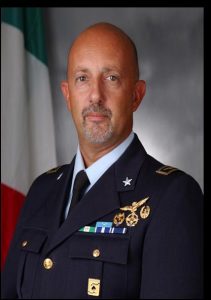
After commanding the 28th Squadron, as a Lt.Col, was commanded to the Air Staff in Rome first, then Vicenza Opr Command, where he led the planning and organizing teams for the Air Force main Air Exercises. Until 2005 he was allowed to fly the AMX as a safety /check pilot at his former unit, with a 50% reduced flight time, compared to the full time operational pilots. Pinned as Full Bird Colonel, from 2005 to 2008 assumed the command of Aviano ItAF Base, hosting the USAF 31st FW. Between the responsibilities, he had to smoothen all the legal, political, environmental and standardization problems eventually arising. The effort was partly compensated with some back seat ride on the 555th and 510th F.Squadron F16s.
The next 4 years were spent as Combat Support Branch Head at the NATO Joint Air Power Competence Center in Kalkar (DEU), with the task of enhancing the standardization and interoperability of the NATO Units, concerning the Airlift, Combat SAR/Personal Recovery and Air to Air Refueling capabilities. In 2012 he was re-assigned to the ItAF Air Warfare College in Florence as the Officers Classes Commander, until his retirement in 2015. With the honorary title of B.Gen (as a consolidated tradition in the Italian Armed Forces, the Officers receive a honorary promotion the day before retirement), Roberto Sardo is still enjoying full time flying as a civilian Flight Instructor, glider pilot and owns a STOL Slepcev Storch, replica of the WW2 Fieseler Fi156. He has three grown up kids and from his father inherited two WW2 Willys MB “Jeep” and other collectible cars.







